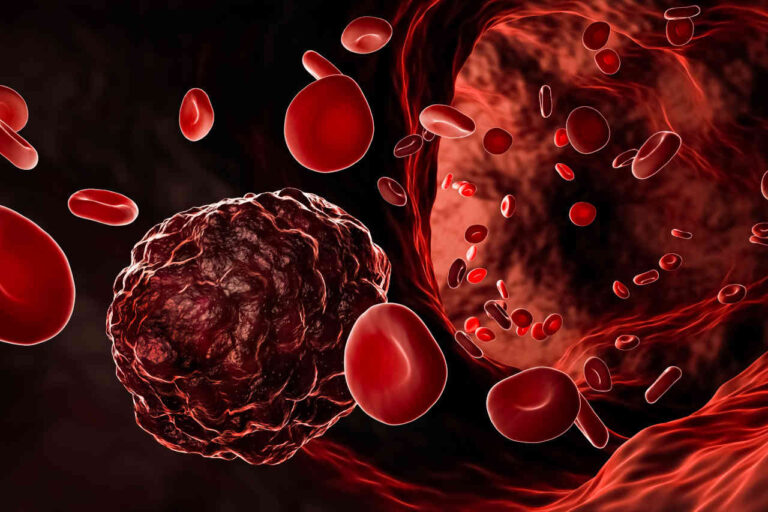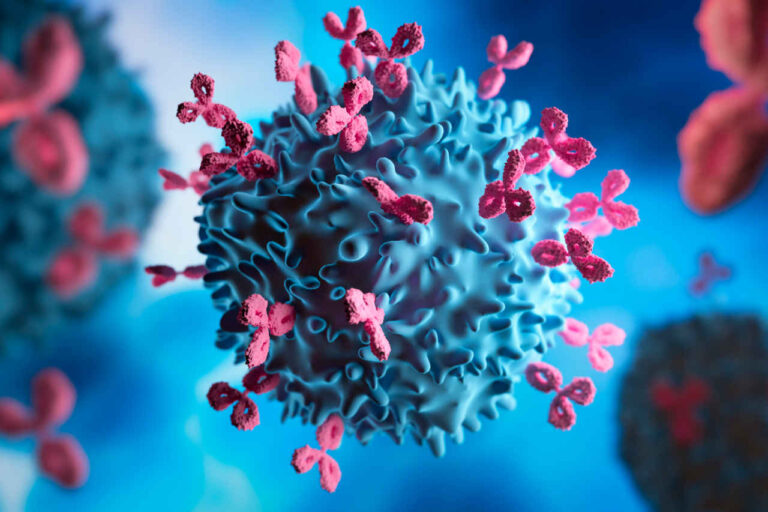
What Is Acalabrutinib?
Acalabrutinib (pronounced [a KAL a broo ti nib]) is also known by the brand name, Calquence. It is a type of chemotherapy and an antineoplastic (anticancer) drug that belongs to a class called tyrosine kinase inhibitors (TKI). TKIs work by inhibiting the enzyme tyrosine kinase, thus blocking cell growth and division. Calquence is not considered a hazardous agent.
What Is Chemotherapy?
Chemotherapy is a cancer treatment in which certain drugs are used to kill cancerous cells. These drugs are usually cytotoxic chemical substances that are toxic to the cells, restrict their growth, prevent their division, and ultimately kill the cells.
How Is Calquence Used?
Calquence has been approved by the Food and Drug Administration (FDA) to treat different types of incurable blood cancers like chronic lymphocytic leukemia (CLL), small lymphocytic lymphoma (SLL), or mantle cell lymphoma (MCL). Calquence can be prescribed alone or in combination with other chemotherapy agents, like obinutuzumab (Gazyva), depending on the severity and type of cancer.
Available Formulations
Calquence is only available in the form of capsules and must be administered orally. The capsules are only available in a 100 mg strength. The capsules are yellow and blue and have “ACA 100 mg” imprinted on them. Calquence is dosed twice a day, and the dose is dependent on the cancer type or severity and other factors. Verify the correct dose and frequency with your provider.
Directions for Use
Calquence may be taken with or without food, but it should be taken with water. When taking the capsule, swallow it whole; do not open, break, crush, chew, or allow it to dissolve in your mouth. If taken in combination with obinutuzumab (Gazyva), which is given intravenously, it is best to take Calquence at least one hour prior to the infusion.
Missed Dose
If you accidentally miss a dose, and it has been more than 3 hours, skip the missed dose and continue with the next scheduled dose. Do not take extra doses to make up for a missed dose.
Storage
Store capsules in a cool, dry place at room temperature and ensure the bottle is tightly closed.
What To Avoid While Taking Calquence?
While on Calquence therapy, you must follow some precautions. Always tell your physician about any medications you are already taking. Do not take any drug or medicine (even herbals or over-the-counter medications) without prior consent from your physician or pharmacist, as they may have significant interactions with Calquence.
Avoid any kind of immunization or vaccination without prior consent from your physician. Minimize sun exposure and use sunblock while outside. Separate taking this medication from any antacids or gastric acid-suppressing agents (like Tums, Ranitidine, or Famotidine), by at least 2 hours. Avoid taking any Proton Pump Inhibitors (PPIs) with Calquence entirely (like pantoprazole, omeprazole, etc).
Avoid grapefruit, grapefruit juice, and any foods or supplements containing grapefruit or grapefruit juice throughout therapy as they may also interact with the medication. Avoid drinking any alcoholic beverages, especially if taking Calquence in combination with obinutuzumab. It may be necessary to discontinue Calquence 3 to 7 days before any scheduled surgeries.
Pregnancy and Calquence
Pregnancy status must be checked prior to starting chemotherapy in women of child-bearing age. Effective contraception must be used during treatment and for 1 week after the last dose. Calquence may cause fetal harm and is therefore not recommended for women who are breastfeeding during therapy. Breastfeeding should also be avoided for at least 2 weeks after the last dose.
Side Effects
As with any other medication, you may encounter many side effects while taking Calquence. A few things to keep in mind are:
- You may not have all the side effects listed below. Many people may experience little to no side effects.
- The severity of side effects may vary from person to person, so don’t compare your side effects with other people’s experiences.
- Most of the side effects will improve when therapy is discontinued.
- These side effects are easily manageable most of the time either by readjusting the dose of Calquence or using additional medications to treat the symptoms. Consult with your physician or pharmacist to explore available options.
- Do not hide any symptoms; when you feel any discomfort, do not hesitate to tell your physician or pharmacist about it.
Note: This is not a comprehensive list of all side effects. Talk to your doctor if you have questions.
Some of the most common side effects of Calquence are:
Nausea and Vomiting
You may feel acute or delayed nausea and vomiting once you start chemotherapy. These symptoms usually disappear after a few hours or days after starting therapy. If nausea or vomiting is severe, contact your physician to see if they can add an antiemetic medication to the regimen. Eating habits should consist of small amounts of food 4 to 6 times a day. Try to avoid eating too much at once. Maintain proper body hydration and drink fluids throughout the day. Nausea and vomiting may result in abdominal pain and can also cause a decrease in appetite, leading to weight loss.
Diarrhea or Abdominal Pain
If you have watery stools more than four times a day or frequent loose, watery stools, you may have diarrhea. This is one of the most common side effects of Calquence. Abdominal pain may be associated with diarrhea. Stay hydrated and take plenty of fluids to maintain the water balance of your body. Avoid eating raw foods, fruits, vegetables, whole-grain bread, cereals, seeds, and any other foods that may exacerbate diarrhea. Foods that will help reduce diarrheal risk include boiled or baked chicken (white meat) and white rice. In rare cases, diarrhea may get severe. If that happens, consult your doctor immediately. Patients 60 years or older may experience a greater incidence of these side effects.
Bleeding Complications
Bleeding problems may occur including bruising; black, tarry, or bloody stools; bleeding gums; blood in the urine; coughing up blood; cuts that take a long time to stop bleeding; feeling dizzy, tired, or weak; nosebleeds; pain or swelling; increased menstrual flow; throwing up blood; vomit that looks like coffee grounds; or a very bad headache. These side effects can potentially lead to serious hemorrhagic events; therefore, inform your physician if any of these bleeding complications appear. It may be necessary to discontinue Calquence 3 to 7 days before any scheduled surgeries.
Infection Risk
There may be a high chance of acquiring an infection while on Calquence therapy. Infections may include fungal, bacterial (like pneumonia), or viral infections (like hepatitis B). If previously infected with hepatitis B, using Calquence may lead to the reactivation of the viral infection. In order to minimize the risk of infection, it is important to avoid crowds, unhygienic street foods, certain vaccines, etc. Early symptoms of infection may include cough, chills, fever, flu, or trouble breathing. If you acquire any infection, immediately seek advice from your physician.
Bone Marrow Suppression
It is essential to keep up with regular blood tests, especially the complete blood count test (CBC). The CBC blood test is capable of detecting potential side effects of Calquence, including leukopenia (low white blood cells level), thrombocytopenia (low platelet count), neutropenia (low white blood cells), and anemia (low red blood cells), all of which are potential side effects from the use of Calquence.
Heart Rhythm Complications
There is a risk that Calquence may cause heart rhythm complications like atrial fibrillation or atrial flutter. Symptoms may present as shortness of breath, irregular heartbeat, chest discomfort, or dizziness. Risk is higher in patients with a history of high blood pressure or arrhythmias.
Secondary Malignancies
It is possible that Calquence can give rise to a secondary type of cancer during treatment. The most common cancer is skin cancer, which is why it is essential to avoid the sun during therapy and use sunscreen while outdoors. If any new lumps or moles appear on the skin, consult your physician immediately.
Other common side effects may include:
- Muscle tenderness or pain
- Fatigue
- Skin rash
- Bruising
- Neck, joint, or bone pain
Precautions
Unless approved by your physician, Calquence is generally not recommended in:
- Patients who have an allergy to Calquence. Allergic reactions can cause a rash over the whole body, shortness of breath, wheezing, dizziness, swelling around your mouth or eyes, fast heart rate, trouble breathing, and sweating. If you have any of these symptoms, stop using Calquence and call your doctor or get emergency help right away.
- Patients with a risk of high blood pressure or a history of arrhythmias. Blood pressure should be monitored regularly.
- Patients undergoing elective surgery. Calquence may need to be discontinued 3 to 7 days before and after scheduled surgeries.
FAQs
Is Calquence a chemo agent?
Chemo drugs are those that are used in the management of various cancers. Calquence kills cancer cells and is therefore a chemo agent. It is recommended as a treatment option for various cancer patients.
What is the best time to take Calquence?
Calquence may be taken with or without food but should be taken with water. When taking the capsule, swallow it whole; do not open, break, crush, chew, or allow it to dissolve in your mouth. If taken in combination with obinutuzumab (Gazyva), which is given intravenously, it is best to take Calquence at least 1 hour prior to the infusion.
Is Acalanritinib available as a generic?
Currently, acalanritinib is not available as a generic. It is only available as the brand, Calquence.
REFERENCES:
Abbas, H. A., & Wierda, W. G. (2021). Acalabrutinib: A Selective Bruton Tyrosine Kinase Inhibitor for the Treatment of B-Cell Malignancies. Frontiers in Oncology, 11, 1620.
Acalabrutinib. In: Lexi-drugs online [database on the Internet]. Hudson (OH): Lexicomp, Inc.; 2016 [updated 6 Nov 2021; cited 9 Nov 2021]. Available from: http://online.lexi.com
Acalabrutinib. In: In Depth Answers [database on the Internet]. Greenwood Village (CO): IBM Corporation; 2017 [cited 2021 Nov 9]. Available from: www.micromedexsolutions.com.
Byrd, J. C., Harrington, B., O’Brien, S., Jones, J. A., Schuh, A., Devereux, S., … & Furman, R. R. (2016). Acalabrutinib (ACP-196) in relapsed chronic lymphocytic leukemia. New England Journal of Medicine, 374(4), 323-332.
Calquence: Uses, dosage, side effects, warnings. Drugs.com. (n.d.). Retrieved November 9, 2021, from https://www.drugs.com/Calquence.html.
Ghia, P., Pluta, A., Wach, M., Lysak, D., Kozak, T., Simkovic, M., … & Jurczak, W. (2020). ASCEND: phase III, randomized trial of acalabrutinib versus idelalisib plus rituximab or bendamustine plus rituximab in relapsed or refractory chronic lymphocytic leukemia. Journal of Clinical Oncology, 38(25), 2849-2861.
Luttwak, E., Gurevich-Shapiro, A., Azem, F., Lishner, M., Klieger, C., Herishanu, Y., … & Avivi, I. (2021). Novel agents for the treatment of lymphomas during pregnancy: A comprehensive literature review. Blood Reviews, 100831
Sharman, J. P., Banerji, V., Fogliatto, L. M., Herishanu, Y., Munir, T., Walewska, R., … & Byrd, J. C. (2019). ELEVATE TN: Phase 3 study of acalabrutinib combined with obinutuzumab (O) or alone vs O plus chlorambucil (Clb) in patients (Pts) with treatment-naive chronic lymphocytic leukemia (CLL).
Singh, S. P., Dammeijer, F., & Hendriks, R. W. (2018). Role of Bruton’s tyrosine kinase in B cells and malignancies. Molecular cancer, 17(1), 1-23.
Wang, M., Rule, S., Zinzani, P. L., Goy, A., Casasnovas, O., Smith, S. D., … & Jurczak, W. (2018). Acalabrutinib in relapsed or refractory mantle cell lymphoma (ACE-LY-004): a single-arm, multicentre, phase 2 trial. The Lancet, 391(10121), 659-667.
Wu, J., Zhang, M., & Liu, D. (2016). Acalabrutinib (ACP-196): a selective second-generation BTK inhibitor. Journal of hematology & oncology, 9(1), 1-4.












